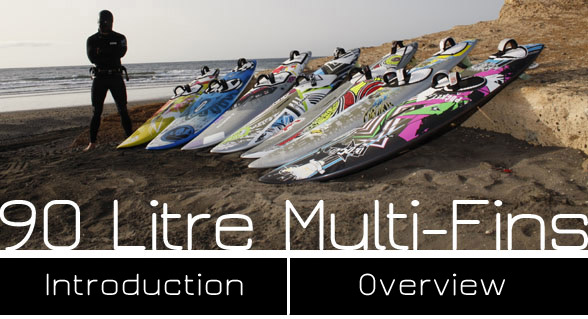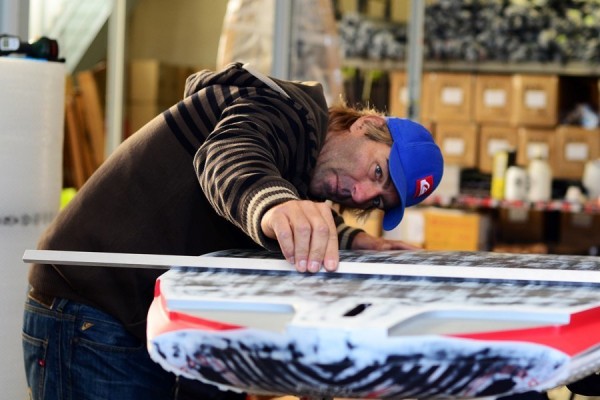Without a doubt the most important development in the recent history of waveboard design has been the introduction of multi-fins. Whether it be twin, tri, thruster or quad, multi-fin setups have opened many new doors – and as Quatro shaper Keith Teboul rightly states later on in this test, they are definitely here to stay!
Initially, multi-fin waveboards were only to be found gracing the calloused soles of pro-riders – most famously those of Kauli Seadi, who used his multi-fin to crank turns seemingly beyond the laws of physics in Cabo Verde on route to a wave world title. But it wasn’t long before the more mainstream benefits of multi-fin boards became apparent.
First off, it was better waveriding performance in less than ideal conditions. To make the most of small, onshore conditions, a rider needs to hold speed through a tight turn without much help from the wave’s power. Multi-fin boards not only made the bottom turn easier to initiate and potentially tighter, but most importantly they offered a level of control and performance off the top that no singlefin had ever been able to match. Suddenly small mushy waves became a lot of fun! Multi-fin boards allowed more speed to be maintained through the turn and had a fantastic ability to carve or slide through the top turn.
The next big benefit was wind range. Initially multi-fins were knocked for getting planing slower than an equivalent single-fin. But then people realised that, because multi-fins were so much looser than single-fins, you could actually ride a bigger board. Not only that, but at the top end of the wind spectrum, multi-fin boards offered more control. They kept the board manoeuvrable underfoot even when the sail was overpowered, and at the same time, more settled in a straight line with their planted ride. Compensating for slower planing by opting for a bigger board and offering more control at the top end ultimately translated to a waveboard with more wind range – and that’s a very big benefit.
But multi-fins are not just the domain of advanced riders. Now that you’re able to ride a bigger size board that turns more easily and has better wind range, you’re looking at a list of benefits that appeal just as much to the novice wavesailor. It’s no surprise therefore that nearly every waveboard being developed today is a multi-fin.
And that leads me nicely on to size. With people now able to use bigger waveboards, the next – and to an extent still unanswered – question is how big can you actually go?
With almost every brand now producing a dedicated waveboard in the 90-95L size, we asked them if this is really the upper limit or whether we’re likely to see even bigger boards in the future…
Read the full test on our sister site, Boardseeker.com






